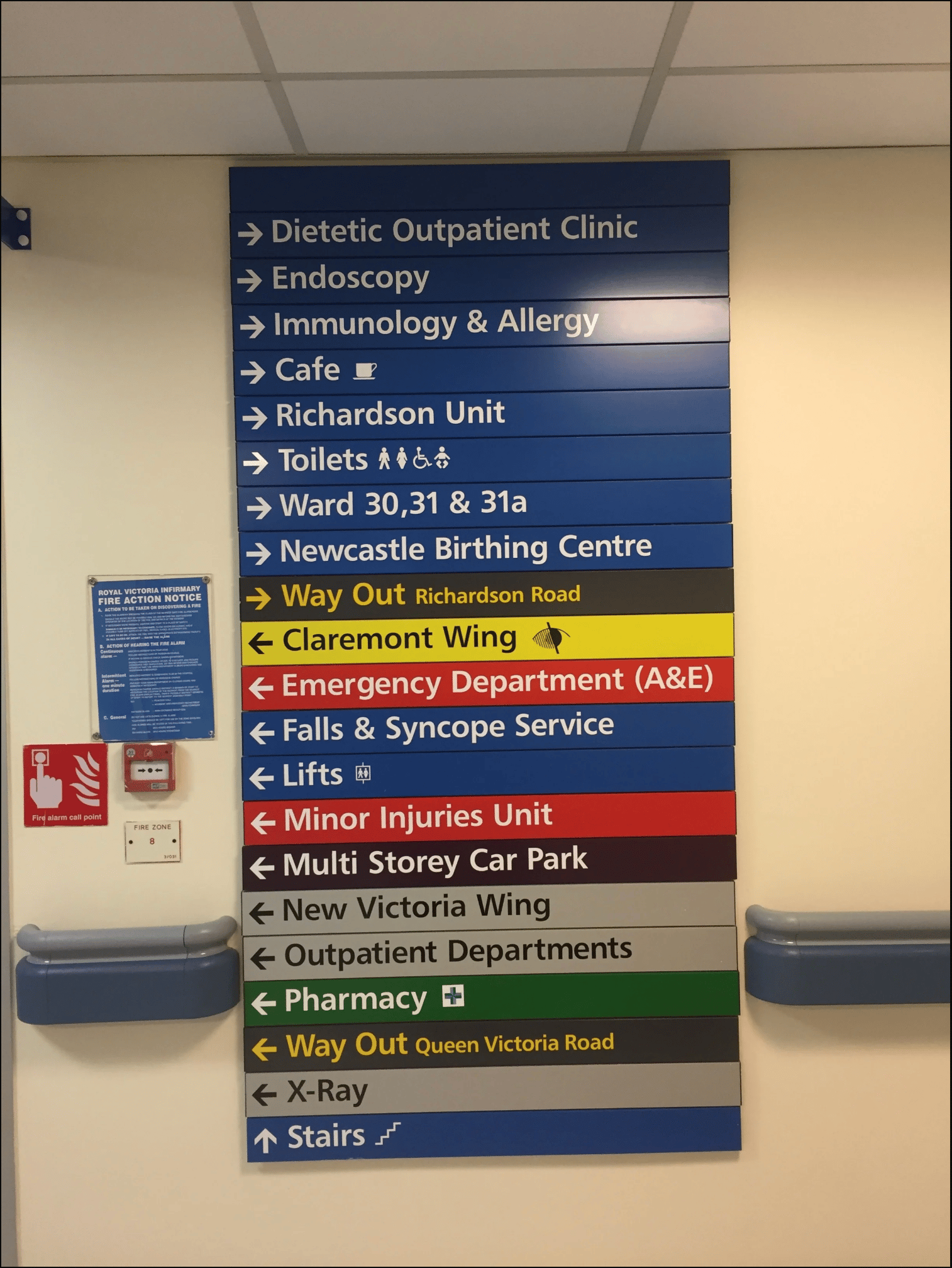- Spark
- Posts
- Everything, everywhere, all at once
Everything, everywhere, all at once
What hospital signage can teach us about effortless brand experiences

Welcome to Spark, a newsletter from Vivace. We curate and publish the most interesting thinking and ideas from our community on themes ranging from business and finance to culture and creativity. Send pitches and feedback to [email protected]. We’d love to hear from you.
Hello Spark reader,
Brand signposting encompasses the many ways we prompt audiences to recognise and hopefully remember us, and then nudge them towards the destinations they might be seeking. A logo is the ultimate brand signpost, but so is a call to action button, or a selection of visuals that help customers to categorise our brand and perhaps begin to weave some of our desired associations into their minds.
But there is such a thing as too much signposting—as Amy Erato cautions in this week’s feature. Amy is a marketing leader and writer who recently joined our bench of talented senior marketing specialists. She and our Managing Director Jeanette Juetten were commiserating over their shared experiences of terrible hospital signage, something many of us can probably relate to, and the following piece was sparked…
—Ryan
The science of brand signposting
Walk into a hospital and what’s the first thing you notice? Signs. They’re everywhere. Directional arrows. “Registration.” “Authorized Personnel Only.” “Do Not Enter.” “Emergency Department Ahead.” Sometimes there are even hallways with directional arrows painted on the walls or floors in colors corresponding to specific departments or patient areas.
The intent is to help, but in fact the effect is often the opposite. When there is too much information everywhere all at once, the result is confusion. People hesitate. They ask for help. In a hospital where urgency and stress is already high, unclear signposting compounds the anxiety.
The same can be said about marketing.
Every touchpoint is a brand experience
A website banner and call-to-action is a type of signpost. Every navigation bar is supposed to help you find your way, but when there’s too much information, too many directions, and too many messages, the result is the same as a crowded hospital hallway: confusion.
From digital touchpoints like websites, emails and social media pages, to direct mail, brochures, and articles, the visual and verbal cues are all signposts guiding people through a journey. When brands try to say everything, everywhere, all at once, customers don’t know where to look or what to do next.